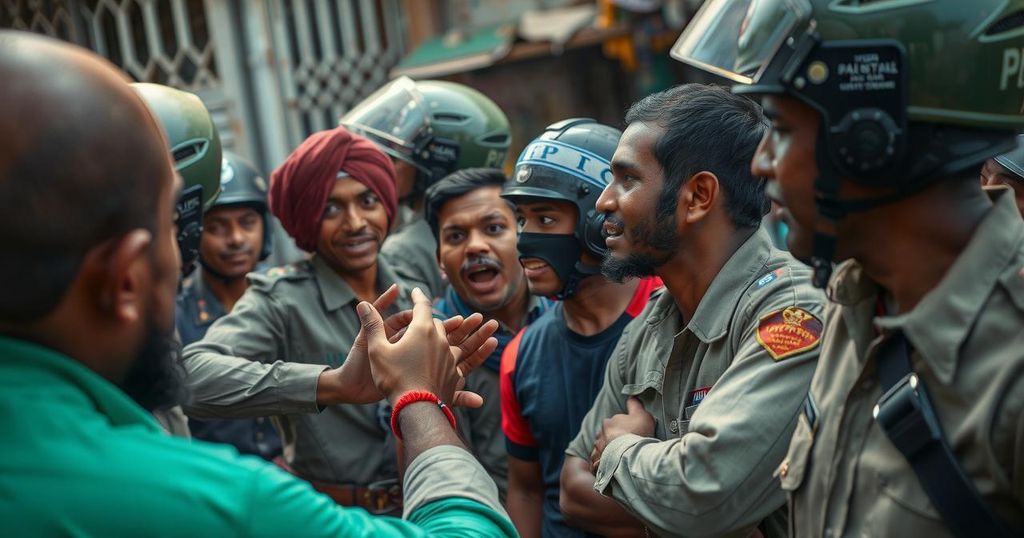Violence Erupts as Bangladeshi Garment Workers Protest Job Losses
On October 31, garment workers in Dhaka protested against layoffs, leading to violent clashes with police and resulting in two teenagers being shot. The unrest stems from significant tensions within Bangladesh’s critical garment sector, which has faced layoffs and factory closures amid ongoing protests for better working conditions. The industry is vital to the country’s economy, accounting for a substantial portion of exports.
On October 31, garment workers in Dhaka, Bangladesh, staged intense protests against job layoffs, resulting in violent clashes with police and soldiers. The unrest erupted following the abrupt closure of a prominent garment factory, leading to thousands of individuals marching in the Mirpur area. During the altercations, two teenagers aged 15 and 17 sustained gunshot wounds. Mohammed Faruq, a police officer at Dhaka Medical College, confirmed their injuries, indicating the considerable turmoil surrounding the garment industry, a critical sector contributing to approximately 85 percent of the country’s annual export revenue.
Witnesses reported that demonstrations turned violent, with security vehicles set ablaze amid escalating tensions. The protests were catalyzed by significant layoffs and factory closures, prompting a united display of discontent among workers across multiple garment factories in the Mirpur area. Police spokesperson Kazi Golam Mostofa refrained from commenting on the circumstances of the teenagers’ injuries but acknowledged the protests were intensified following the factory shutdown.
The ongoing unrest reflects a broader context of economic instability and labor strife within Bangladesh’s garment sector, the second-largest globally. Following a series of protests demanding better working conditions and job security, a previous protest on September 30 led to the death of a garment worker and multiple injuries. The Bangladesh Garment Manufacturers and Exporters Association has attributed financial losses of approximately $400 million to the unrest since August, advocating for enhanced security measures to protect the industry from further destabilization.
The garment industry is a crucial economic driver for Bangladesh, making up a significant portion of the nation’s exports. As the second-largest exporter of clothing in the world, the sector employs millions and serves many of the globe’s leading fashion brands. However, recent months have seen increasing unrest, primarily due to job losses and factory closures, exacerbated by the economic impact of protests related to political upheaval. The labor unrest not only poses risks to workers’ livelihoods but also threatens the overall economic stability of the country.
In summary, the violent clashes between garment workers and security forces in Dhaka illustrate a severe crisis within Bangladesh’s garment industry, marked by job losses and protests over working conditions. The shooting of two teenagers during these demonstrations underscores the escalating tensions and the precarious nature of employment in this vital sector. With substantial economic repercussions already observed, the future of Bangladesh’s garment industry remains uncertain amid ongoing calls for reform and improved protection for workers.
Original Source: www.heraldmalaysia.com








Post Comment